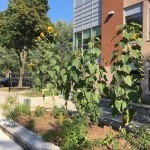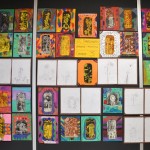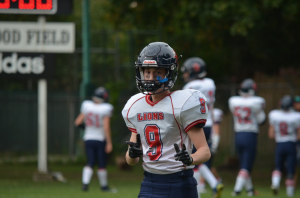 It’s hard to put into words the feeling you get when you play football. You think to yourself, “All right, who am I covering? What’s the play call? Are they passing or running? How many receivers are lined up on my side?”
It’s hard to put into words the feeling you get when you play football. You think to yourself, “All right, who am I covering? What’s the play call? Are they passing or running? How many receivers are lined up on my side?”
I know to some of you those words mean absolutely nothing. But to me, football actually goes beyond just this.
In elementary school, I was only into drama. In grade 5, I was Sebastian in the Little Mermaid and in grade 6, I was Woody in Toy Story. And then, when I came to LCC everything seemed to just fall into place.
In grade 8, I joined the football team. I figured, “Hey, they seem to be encouraging kids to play a sport every season, so why not try it out?” Little did I know, it would change my life.
For those of you who have ever been in Mr. Carlyle’s English class with me, you know I love to bring up LCC’s football championship in every oral presentation to prove that I am a bit athletic. So most of you know that in 2013 LCC won the championship, beating the first place team Selwyn House in the finals. And from that moment on, I never looked back.
For the next three years, football wasn’t just a sport, it was my entire fall season. This year, I was not on the team at the start of the season because I felt that work would consume my entire semester. But little did I know that within a few weeks I would come crawling back to Mr. Carlyle to be back on the team. And boy, am I happy I did that.
I loved all the practices after school with friends, sometimes ones that had to be taken seriously and others where we could lay back a bit and crack a few jokes. But I can honestly say that nothing has had a bigger impact on me in my entire life than football has.
I went from being a guy who was really, really, really bad at sports, to a guy who was still not great but a bit better. In all seriousness, it helped me grow as a player and as a person.
I can’t quite describe the feeling of a player running full speed at me and only having half a second to decide how I’m going to tackle him or where I’m going to tackle him, but I can tell you that most of the time it’s too late because he’s already knocked me down and scored the touchdown. But knowing that for two hours a day I can put everything else aside and fight for the guys on the field and on the sideline, makes every injury, every practice, every tackle, worth it.
When we break down in our huddle before each game, we use LCC’s classic cheer, Pride on 3. And why wouldn’t we? As LCC students, we’re full of pride. And we deserve to be.
I’m full of pride because I know that every guy who puts on that jersey at the end of the week is going to fight his hardest for me and my other teammates.
I’m full of pride because I know that even if we lose, we handle it with dignity and proper etiquette and come back hard in practice to prepare for another week.
I’m full of pride because I know that for those precious minutes we have to play the game we love, we can put aside our differences and become brothers.
I’m full of pride because I’m an LCC Lion.
So why did I write this? I wrote it when I got home from football a few weeks ago after suffering a heart-breaking loss which knocked us out of playoff contention. But my message, I hope, is clear. When I came to LCC, I started out as an unathletic guy who barely knew how to catch a football. And now? In grade 11, I leave here with 34 other guys I can call my brothers. You may not be into sports. I was like you at a point in my life, but no matter what co-curricular you decide to join at school, whether it be football, glee club, baseball or robotics, I can promise you the memories you form are life-changing.
So why not give it a try? Go join that team you were too afraid to try out for. Go sign up for that club you were too shy to join. Because the odds are, it may turn into something much more meaningful than just another team. – Noah Chazonoff ’17

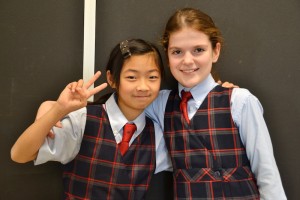 Perhaps the best indication of LCC’s success as a leader in developing open-minded, empathic and engaged citizens of the world is when students, on their own initiative, cross cultural and linguistic boundaries to gain new perspectives and a better understanding of one another. That is precisely what happened when Amélie and Kelly met in their grade 5 class.
Perhaps the best indication of LCC’s success as a leader in developing open-minded, empathic and engaged citizens of the world is when students, on their own initiative, cross cultural and linguistic boundaries to gain new perspectives and a better understanding of one another. That is precisely what happened when Amélie and Kelly met in their grade 5 class.

 What do our students have in common with former NBA basketball star Wilt Chamberlain and Habs’ goaltending great Jacques Plante? They have all been held back by social conformity, more commonly known as peer pressure. This is not about teen anxiety and the pressures of fitting in with the latest trends. It is about something bigger.
What do our students have in common with former NBA basketball star Wilt Chamberlain and Habs’ goaltending great Jacques Plante? They have all been held back by social conformity, more commonly known as peer pressure. This is not about teen anxiety and the pressures of fitting in with the latest trends. It is about something bigger.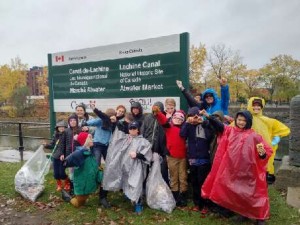 Malgré le froid et la pluie, nous étions 19 pour la 5e édition du grand nettoyage des berges du canal Lachine. Cette année, nous avons eu la joie d’avoir des élèves du Junior School.
Malgré le froid et la pluie, nous étions 19 pour la 5e édition du grand nettoyage des berges du canal Lachine. Cette année, nous avons eu la joie d’avoir des élèves du Junior School.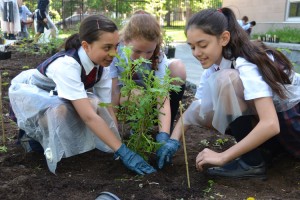 With pollinators like bees and butterflies in dangerous decline and our reliance on them for almost 90 per cent of the world’s plants, a crisis is brewing and LCC students responded with fervor. Last spring, students from grades 3 to 11 literally rolled up their sleeves and got down in the dirt, creating a garden on the LCC grounds to bring back the butterflies.
With pollinators like bees and butterflies in dangerous decline and our reliance on them for almost 90 per cent of the world’s plants, a crisis is brewing and LCC students responded with fervor. Last spring, students from grades 3 to 11 literally rolled up their sleeves and got down in the dirt, creating a garden on the LCC grounds to bring back the butterflies.